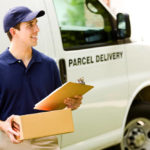 More people are skipping the trip to physical stores, thanks to online shopping and home delivery taking over. This shift has led to the closure of many regular shops and big department stores, especially with the pandemic making people avoid in-person shopping.
More people are skipping the trip to physical stores, thanks to online shopping and home delivery taking over. This shift has led to the closure of many regular shops and big department stores, especially with the pandemic making people avoid in-person shopping.
Now, a study from the University of Tulsa talks about how suppliers want to make the most of this change. People are getting everything delivered to their doors—groceries, medicine, gadgets, you name it. So, retailers are trying out new ideas to stay strong and make more money.
Upselling
One interesting idea is called the “driver-becoming-salesperson” strategy. Despite the clunky name, it’s a big deal for selling more stuff when the delivery person drops off your order. They don’t just give you what you bought; they also offer you more things right at your doorstep.
Usually, the last step of delivering stuff is seen as just a logistical job. Drivers are hired, vehicles are prepped, and they take the quickest route to get things to customers fast. The hope is that happy customers will shop again. But now, some are thinking differently. They want delivery people to do more than just deliver—they want them to be sales agents.
The idea is pretty straightforward but might need some smart execution. It relies on the fact that the delivery person has a chance to talk directly with the customer when dropping off their order. With the right skills, training, and products to offer, the delivery person could make the shopping experience like a virtual store right at the customer’s home. Door-to-door sales have been around forever, but this driver-as-upseller idea fits better with the way we shop online today, where most stores are virtual.
Selling on the go
To figure out a smart way for sellers to choose products that drivers can sell on the go, the researchers took on two tough problems—the vehicle-routing problem and the multiple-knapsack problem. By tackling both at once, they aimed to find the best way for sellers to pick products their drivers could upsell from their delivery trucks.
The model they built combines the nitty-gritty of logistics with the art of selling, considering stuff like product features, what customers like, and the best route. The results show that finding a quick route is easy, but hitting the right customers for upselling is what really matters.
The “driver-upseller” plan is a practical move to help retailers keep up with the changing shopping habits. It takes advantage of the last-mile delivery process by letting drivers engage with customers on the spot and offer more products. With online shopping on the rise, retailers adopting this approach are likely to up their game—becoming more competitive, making more sales, and keeping customers happy.